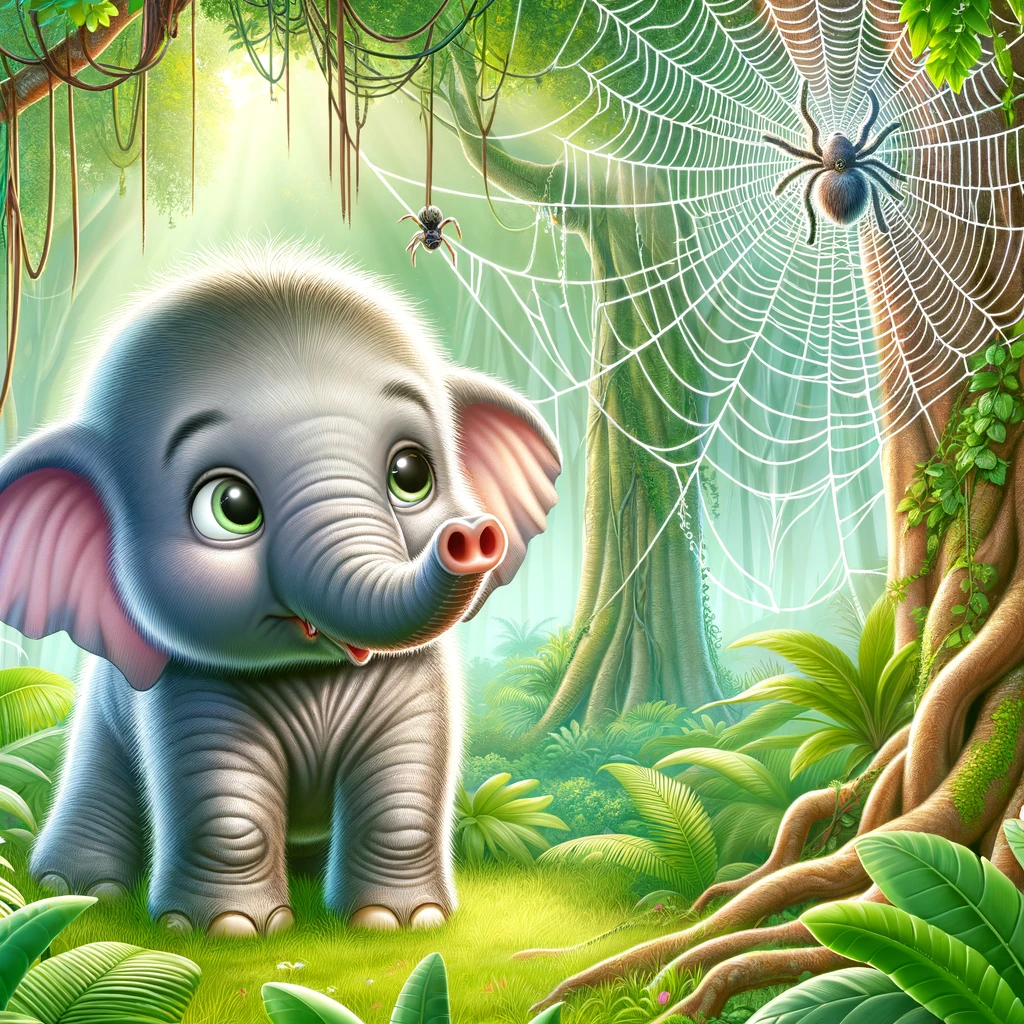
“The Spider and the Elephant’s Child” is a fascinating tale from Rudyard Kipling’s “Just So Stories,” a collection of fables explaining how various animals came to have their distinctive features. This story, like others in the collection, blends imaginative storytelling with a whimsical explanation of an animal’s characteristics—in this case, the elephant’s long trunk.
The tale begins in a time when elephants had short, stubby noses. The protagonist, a curious and adventurous young elephant, is always full of questions about the world around him. His insatiable curiosity leads him to explore the great, mysterious Limpopo River. On his journey, he encounters many animals, but none can satisfy his endless inquiries.
The turning point of the story arrives when the young elephant meets a cunning spider. This spider, known for her wisdom and trickery, promises to answer the elephant’s questions but only if he follows her into the forest. Eager for knowledge, the elephant agrees, unaware of the spider’s sly plan.
In the dense jungle, the spider weaves an intricate web of tales and lies, entrapping the elephant’s mind with falsehoods and half-truths. The young elephant, however, is not easily fooled. He starts to question the spider’s stories, realizing that they do not align with what he has observed in the world.
The climax of the story is a confrontation between the elephant and the spider. The spider, feeling threatened by the elephant’s probing questions, tries to escape. In a desperate attempt to stop her, the elephant reaches out with his short nose, which gets caught in the spider’s web. The spider, in her panic, pulls on the web, stretching the elephant’s nose longer and longer.
The story concludes with the elephant returning home, his nose now transformed into a long, flexible trunk. He discovers the many advantages of his new appendage, such as being able to swat flies, pick fruit, and, most importantly, continue his quest for knowledge without being easily deceived.
“The Spider and the Elephant’s Child” is a delightful story that not only entertains but also imparts valuable lessons. It teaches the importance of curiosity, critical thinking, and the quest for true knowledge. Kipling’s skillful storytelling, combined with the allegorical nature of the narrative, makes this story a timeless classic, appealing to both children and adults.
